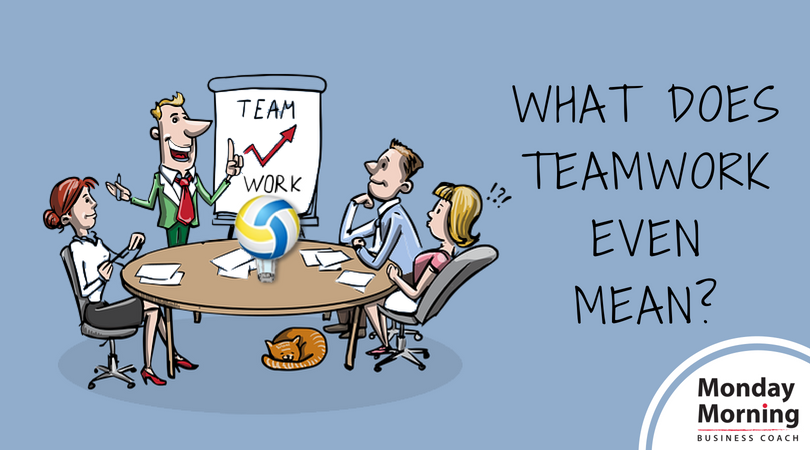
In the USA it’s Labor Day, a time each year when we, as a country, recognize the contributions that workers have made to the success, strength, and well-being of our country.
Our last few posts have been focused on the challenges people face when working.
Last week, we offered some coaching in “It’s All About Teamwork”. Since that post we’ve heard from a number of you asking what the word teamwork even means in our current work world. So today, we want to weigh in on what we mean by teamwork.
Truth be told, there are teams everywhere, whether we call them teams or not.
There are teams in companies that provide everything from healthcare to smart phones to waste management to consulting. There are teams in big companies and tiny ones – even solopreneurs create teams through collaboration and partnering. There are soccer teams and lacrosse teams and gymnastic teams. There are neighborhood watch teams and neighborhood gardening teams. And, actually, many families function as teams as well.
From our perspective, the thing that makes a team is the commitment to fostering an environment of shared ownership for the success of the business (and sports team, neighborhood, family, etc.) as a whole, not just the individual in their area of responsibility.
Great teams understand that, together, they own the success of the whole and as a result, they’re all more successful.
Yet, when you ask people to describe the teams that they’re a part of, few describe a team that works together to create organizational or departmental success while also creating success for their individual areas of responsibility. Few understand the kinds of information they must communicate to others so that they’re making decisions with an awareness of how those decisions ripple through the rest of their organization.
Developing a great team happens over time as individuals build trust and a shared history, succeed in the face of significant challenges, fail together (even miserably at times), and learn to disagree in ways that support them working together to create success.
And while building a great team does take time, we have found a simple action that can accelerate this movement toward greatness: a simple, almost silly-seeming, action that has a profound impact on team success.
Place a volleyball-sized ball at the center of the table when your team meets.
Sounds crazy, right? But in truth, your organization is like this volleyball on the table.
There are areas of your organization that are hard to see, just like the part of the ball that is sitting on the table and the part of the ball at the top in the center. And, as you sit in your seats around the table, the areas opposite from you are impossible to see. Actually, from your vantage point, you, individually, can only see about one-third of the ball. As is true in your day-to-day role, alone you actually see a very small slice of the overall organization.
With the volleyball (your organization)–at the center of the table–you can see that:
- You need enough people, and the right people, at the table to ensure that someone has eyes on all aspects of the organization.
- If you aren’t communicating with your team members regularly and thoughtfully, you’ll be missing two-thirds of the data about what’s going on.
- If you make significant decisions without collaborating with the members of your team, the ripples of those decisions could impede the success of other team members and the organization.
- If you’re the leader of the team, you need your team to be engaged, to understand that they hold the whole, and to communicate effectively with others. Then, at those times when you meet individually and need to decide quickly, there’s wisdom about what’s happening to arrive at the best outcome.
- The “we” of the team matters more than you could imagine.
We’re passionate about supporting the workers of this world in creating success and work satisfaction so we’ve brought volleyballs to more organizations than we can count.
Meeting after meeting the ball sits in the middle of the table and the team begins to have different conversations about the whole. They start sharing information that could have rippled problematically through the organization. And they understand that having one another’s backs means supporting as well as challenging each other to create success in both the individual areas of responsibility as well as in the whole.
Give it a try–put a volleyball on the table while your team meets. Try having the ball on the table for 6 months or a year. We’ve seen, over and over again, that great teams are built by collaborating to ensure success of the whole, and the volleyball is a way to remind people of the importance of that collaboration. If your team is struggling let us know–we would love to help!
~ Linda, Stephanie, and Heather
contact us today about our coaching services.

